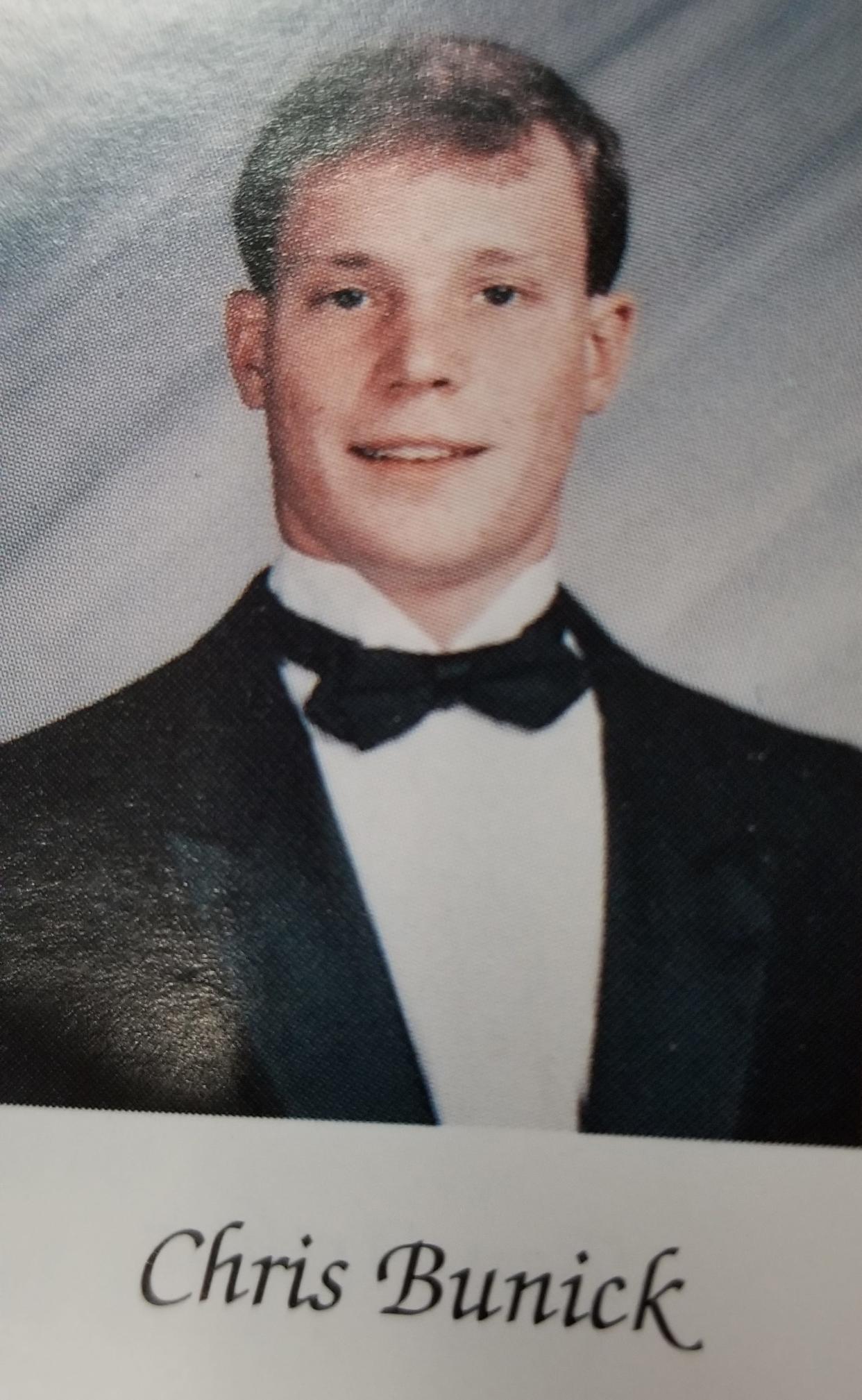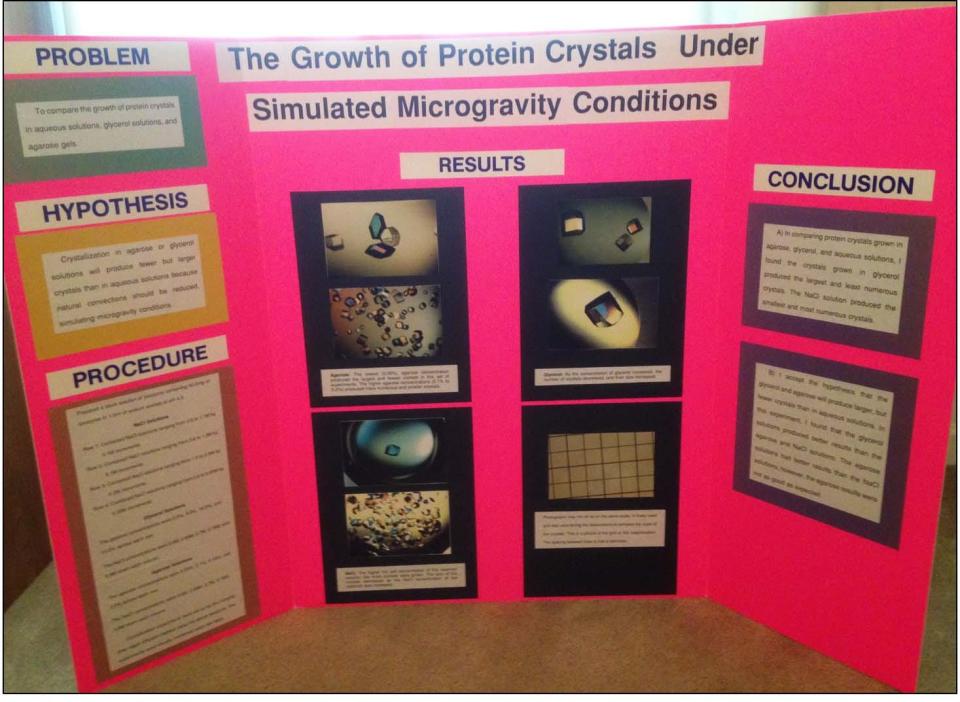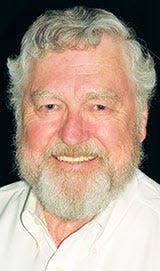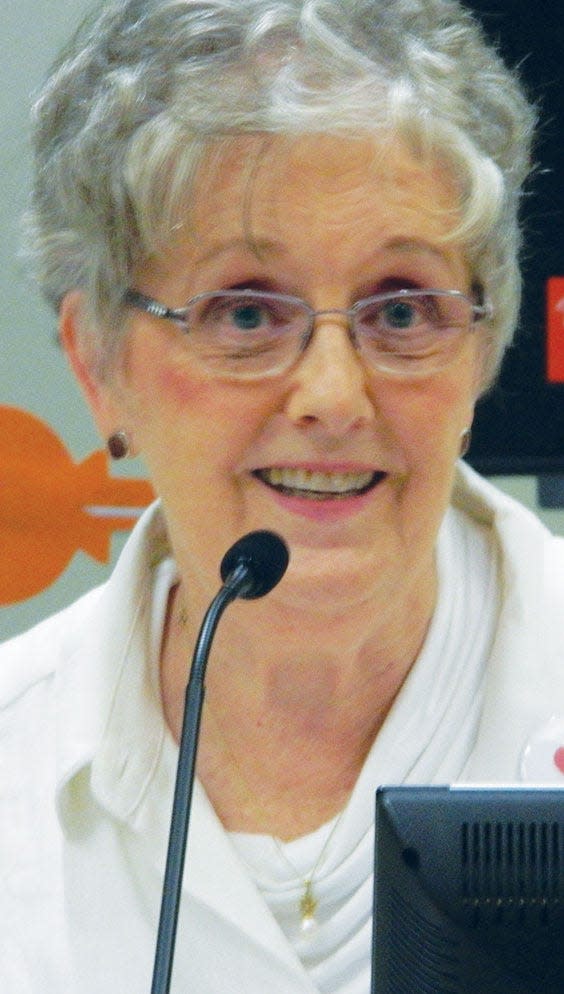Chris Bunick: Practicing physician and researcher

Retired Oak Ridge High School teacher Benita Albert brings us the amazing story of Chris Bunick that began with a ninth-grade science project and led to an ensuing career in science that was encouraged by his scientist father. Chris is yet another Oak Ridge Schools graduate who has excelled in his chosen career field.
***
In the 1993 Jefferson Junior High School (JJHS) Science Fair, Chris Bunick’s project was about growing protein crystals in a microgravity environment. Chris recently recalled, “This project sparked my interest in crystallography. Now I am the only board-certified dermatologist in the United States (and possibly the world) who does primary structural biology research. I still have photos of that ninth-grade project, and I use it in my presentations to show where my career really started.”

Chris now leads a research team at Yale University, residing in the former lab of Nobel Laureate Thomas Steitz, who was his structural biology mentor during his postdoctoral research fellowship at Yale. Chris had the highest praise for Steitz: “He gave me complete autonomy to develop my program, enabling me to hone the skills of leadership, communication, and organization necessary to make a research team function successfully.”
Chris is a native Oak Ridger, a 1996 Oak Ridge High School graduate, and the son of two scientists. Chris gives much credit to his father, Gerard Bunick, who planted the seed for his career. Gerard was a biophysics, biochemist, and structural biology researcher in the Y-12 Biology Complex. It was his father’s passion for his work and the family dinners shared while talking science that inspired Chris’s ninth-grade science project. Gerard was involved in a NASA program sending crystallization experiments on the Space Shuttle to the Mir and international space stations. Chris’s project, as he described it, “Was an attempt to mimic the reduced gravity conditions of space here on Earth to see if I could grow ‘better’ crystals.”
Gerard Bunick arrived in Oak Ridge in 1976. After finishing his Ph.D. at the University of Pennsylvania, Gerard searched for a research position in X-Ray crystallography. Learning of early work on the nucleosome (which helps package DNA tightly in the nucleus of cells) by Don and Ada Olins at the Oak Ridge National Laboratory (ORNL), Gerard eagerly accepted an appointment in the ORNL Crystallography Division.

Chris described more of his father’s ORNL research.
“His big discoveries were the X-Ray crystal structure of the nucleosome core particle, as well as the discovery of macromolecular crystal annealing, a process that helps improve protein crystals for X-Ray diffraction studies. My father, before his death in 2007, helped ORNL secure a macromolecular crystallography beamline for the Spallation Neutron Source (SNS).”
Gerard and Elaine met as chemistry lab partners during their undergraduate studies at the University of Massachusetts. They were married in 1973 while both were completing advanced studies, Elaine’s medical school and residency requirements plus a fellowship in endocrinology delayed her Oak Ridge move until 1978. She soon established a clinical practice, fulfilling a critical need as the first board-certified endocrinologist in the Oak Ridge area. Her practice, from 1978-2017, as well as her additional public service and medical leadership roles have proved an invaluable asset in the community.

Though she is now retired from active practice, Elaine’s life is anything but retiring. She is still very active in volunteer work for her church, conducts adult learning education programs through ORICL, serves as medical adviser to the Oak Ridge Senior Advisory Board, and has organized COVID-19 clinics in the area. In the larger world, Elaine has led numerous medical mission trips to Ghana and Mexico. She has received accolades for her service, including the highest award given by Rotary International, the 2020-21 Service Above Self Award for lifelong, continued service nationally and internationally.
Elaine’s private practice thrived as the Bunick family grew. Alongside a busy professional career Elaine made time to monitor schedules for two children and coach soccer, help with homework, chaperone activities, and carpool with other parents. Many nights, after the children’s bedtimes, Elaine could be found at the hospital holding end-of-day consults with her patients. Chris and his sister, Elissa, were born in 1978 and 1980, respectively. Elissa, a 1998 ORHS alumna, is an optometrist in practice in Knoxville, Tennessee.
Chris said his parents were very supportive of their outside interests and activities. Elissa’s passion was dance, following in the footsteps of her mother who also loved to dance. Chris shared that, as a young adult, his mother once tried out for the famed New York City Rockettes. He fondly remembered one of his ORHS classmates telling him that she was in a dance class with his mom and that she couldn’t believe my mom could do moves that she couldn’t.
Elaine recently shared some “Chris Funnies” with me while I was preparing this story. Two of those tales follow and give evidence to the fact that his career started early.
Elaine wrote, “When Chris was about two years old, I had to bring him with me to see a patient in the ER. I put him under the desk in the nursing station with his toys. While I was talking to my patient, Chris toddles in, wearing only a diaper and carrying a tongue blade, and tells my patient ‘I care you!’ Everyone started laughing.”
Elaine added to her “Funnies”: “When my diabetic patients called to report their blood sugars, Chris would answer the phone, take their report and discuss whether they were good or bad. He started doing this when he was eight years old. He even made a diagnosis of diabetes in one of his friends.”
Chris’s extracurricular passion was soccer, a sport he began as a preschooler. He played on AYSO and high school teams plus competitive travel teams and varsity play through all four collegiate, undergraduate years at Vanderbilt University. Though his dad never played the sport, Chris said he was his No. 1 fan, an enthusiastic and supportive presence as he followed his son’s games through the years. Chris credited his ORHS soccer coach, Dennis Rush, for many life principles learned. Chris relished being a part of the three-time state champion, competitive club team from East Tennessee.
Chris had many memories of his Oak Ridge education. He is still touched by the fact that his first-grade teacher, Peggy Gouge, followed his later progress and sent him letters with newspaper clippings of his accomplishments and also a dollar bill tucked inside each caring, personal note. He played the role of Mike Fink in the Woodland third-grade presentation of a Davy Crockett play, and he admitted that he still feels embarrassed that he pretended to act and sing. Fifth-grade teacher Judy Dyer and her state capitals’ curriculum, instilled in him a never-to-be-forgotten lesson.
Chris expressed deep gratitude to Dan DiGregorio who helped sponsor and encourage student participation in the Jefferson Junior High School Science Fair. He opined that such teacher endeavors have the potential to influence future careers. Certainly, for Chris it did. JJHS teacher Vaughan Moore first introduced him to, and inspired a love for, chemistry. He also noted that Dewey Bilbrey’s Advanced Placement (AP) Chemistry course at ORHS gave him a decided academic advantage for collegiate preparation.
At ORHS, Chris maximized his AP coursework in courses such as Economics, Calculus, Physics, U. S. History, and English. In total, these courses earned him 29 AP credits, basically a full year of college placement.
Chris wrote, “I lump all these (above-listed AP courses) because, when I reflect back, they were demanding courses, really college-level courses, but what made each of these courses stand out was the excellence of the teachers — teachers that were enthusiastic, good at communicating, and enjoyed their jobs. And they really cared about student learning. It is the passion with which ORHS teachers taught that still resonates with me. Those early experiences with high quality teachers build confidence in the learning process and help kids realize that learning (and work) can be fun! This is probably the biggest value that ORHS could have given me, that it is okay and preferable to be excited about what you do and have fun doing it.”
The aforementioned courses were taught by George Davis, Benita Albert, Jackie Jacoby, Gene Pickel, and Carol Yoakley, as courses are respectively listed above.
Speaking further to the value of his Oak Ridge education, Chris wrote: “The English courses at ORHS were legendary for their difficulty. But, in hindsight, they were invaluable because I don’t think we (collectively high school students) realized how much writing is needed to ‘make’ it in the real world. I have had to write many grant proposals to the National Institute of Health and other medical foundations, and there is no doubt my writing skills and organizational approach were deeply influenced from my Oak Ridge education.”
Chris touted the benefits of entering Vanderbilt with a year of AP credits: “What this allowed me to do was take one less course per semester, and instead, jump into a research laboratory with Gerald Stubbs, a structural biologist. My research was on plant filamentous viruses, and while I no longer study plant viruses, I do study intermediate filaments, which are filamentous proteins, so the expertise carries over to today. It (the many AP credits) also allowed me to have a college soccer career.”
Chris remembered having no idea what he wanted to do in a future career as he exited ORHS. He thought he might go to college and find “what interested me.” He admitted to an underlying passion for math and science, coursework he gravitated to in his collegiate academic schedule. However, he also said, “I think I dreamed of being a professional soccer player, but reality set in quickly in college.” He added, “After leaving ORHS I seemed to have trouble avoiding injury during my college soccer years.”
In choosing a university program, Chris listed his priorities as a good academic program where he could play soccer. He considered Yale, Duke, and Vanderbilt, and it was the Vanderbilt admission that he accepted. He said, “In hindsight, (Vanderbilt) was the best possible place for my undergraduate career because it provided a complete track for my career development all the way through my M.D./Ph.D. degrees”
He credits his mother’s work and observing her passion for medicine as a strong influence alongside the scientific fervor for research shared with his father for the ultimate trajectory of his educational program and career.
Today
Chris is now an associate professor in the Department of Dermatology at Yale University, a practicing physician, a researcher, and a student mentor. He is the lead researcher of a structural biology lab with the mission to understand human diseases and therapies. He has combined all of the academic, experimental, and hands-on applications of his professional pursuits into a dynamic and evolutionary model for medical advancements.
Part Two of this story will focus on his career and the creative educational pathway Chris pursued in the construction of his unique professional model. As his former ORHS AP Calculus teacher, I can attest to the fact that Chris was seemingly insatiable in his eagerness to learn and in his diligence to make connections and applications which further solidified his understanding. Chris inspired me as his teacher, and now he is inspiring the world of medicine — more on that in the Part Two sequel.
***
Next, we will learn about Chris Bunick’s career of service to others through science and medicine.
This article originally appeared on Oakridger: Chris Bunick: Practicing physician and researcher

